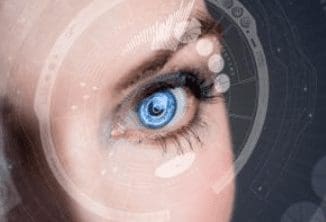Oral Insulin Breakthroughs In Development INTRODUCTION Diabetes is a chronic metabolic disorder primarily classified into two types: type 1 diabetes mellitus (T1DM) and type 2 diabetes mellitus (T2DM). T1DM, an autoimmune disease often diagnosed in adolescence, is marked by the body's inability to produce insulin. In contrast, T2DM, which constitutes the majority
Tag: nanotechnology
Nanosized Traditional Chinese Medicine Technology To Overcome The Blood-Brain Barrier
Nanosized Traditional Chinese Medicine Technology To Overcome The Blood-Brain Barrier Overview Podcast on Spotify Podcast This review explores the intersection of traditional Chinese medicine (TCM) and nanotechnology, known as nano-TCM, as a promising avenue for overcoming the challenges posed by the blood-brain barrier (BBB) in treating central nervous system (CNS) diseases. While TCM has
Concussion Symptom Treatment Using Acoustic Stimulation
Concussion Symptom Treatment Using Acoustic Stimulation In the U.S. military, over 370,000 service members have had mild traumatic brain injuries (mTBI) or concussions since 2000, possibly more due to underreporting. While most recover within 7–30 days, about 15% face persistent postconcussive symptoms (PPCS) for at least 3 months. Despite the end
Dry Eye Disease and Dehydration
Dry Eye Disease and Dehydration Overview Can greater habitual water intake lower the risk of dry eye disease (DED)? Dry eye disease is a complex disease of the tear film and ocular surface. It causes discomfort, visual disturbance, and the risk of damage to the ocular surface. DED is a condition when a
macular edema therapy using dexamethasone nanoparticle suspension
macular edema therapy using dexamethasone nanoparticle suspension PURPOSE To determine the effectiveness and safety of a new topical nanoparticle dexamethasone ophthalmic suspension OCS-01 (Oculis SA, Lausanne, Switzerland) in the treatment of diabetic macular edema (DME). STUDY BACKGROUND Diabetic macular edema (DME) is the main cause of visual impairment in patients with diabetic retinopathy (DR).
Using Nanofiber Antibiotic Sutures Prevent Ophthalmic Infections
Using Nanofiber Antibiotic Sutures to Prevent Ophthalmic Infections Sutures are medical devices applied on the site of injury or surgery. Sutures prevent infection, minimize scarring, and fasten recovery. As of today, the only drug-eluting sutures available for antibacterial application in most surgeries are coated with >triclosan. It’s known that putting drugs
The Future of Glaucoma Therapy? Microneedles and the Reduction of Intraocular Pressure
The Future of Glaucoma Therapy? Microneedles and the Reduction of Intraocular Pressure Around 75 million people suffer from glaucoma, making it the world’s leading eye disorder that causes irreversible blindness. Vision loss in glaucoma patients is often accompanied by the dysfunction of the retinal ganglion cell axons. This is believed to
Use of nanotechnology to deliver topical ophthalmic medications
Use of nanotechnology to deliver topical ophthalmic medications Topical drug delivery systems are widely used in transdermal, mucous membrane, ophthalmic, and otic applications as they are highly versatile, effective, and convenient. However, medication delivery complications such as drug solubility, bioavailability, timed release, and inaccurate physical targeting do exist. Recent advancements in nanotechnology


